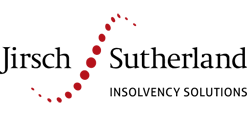I’ve seen so many failed businesses where the directors of these companies can tell me the event that started the downward spiral. It can be so sudden and shocking for all stakeholders – directors, employees, shareholders, creditors and their respective family members. We see firsthand the hurt, the senseless destruction of shareholder wealth and, for many, the end of the entrepreneurial journey.

Experience tells me that this event or moment appears to be very easy to identify in hindsight, but how do we find it looking forward? It is difficult to define but I think if directors are true to themselves they know instinctively when to get help. Earlier in my view is always better – there is no harm in reviewing the company’s affairs and plans – as it enables better planning and more flexibility if strategies need to change.
Empowering directors to remain at the helm
So, why seek early intervention? As a recap, we know that a director who continues to trade a business, when there are reasonable grounds to suspect that the company was insolvent breaches his or her statutory director’s duty to not allow that to happen and as a consequence, directors can be held personally liable for the debts incurred.
 In September 2017, new laws were introduced, known as ‘Safe Harbour’, to encourage company directors to implement a rescue plan without breaching insolvent trading laws. These provisions empower directors to remain at the helm instead of ceding control – many cases prematurely – to external Administrators.
In September 2017, new laws were introduced, known as ‘Safe Harbour’, to encourage company directors to implement a rescue plan without breaching insolvent trading laws. These provisions empower directors to remain at the helm instead of ceding control – many cases prematurely – to external Administrators.
How do you instigate Safe Harbour? As a director, you need to engage an Appropriately Qualified Entity (AQE) such as myself and Jirsch Sutherland to take on the role. To illustrate, I have a number of companies in my care, but the best example is a building and construction client that came to me about four months ago. My clients became concerned when one of their major debtors refused to pay for work – it impacted their cashflow sufficiently enough for them to question whether they would be able to pay all the debts as and when they arose in the near future.
My clients formulated a Better Outcome Plan, which in my opinion provided a superior outcome to the immediate or even possible external administration of the business. There were a number of bank guarantees in place and if work were to stop, the outcome would have been disastrous. The directors balanced their obligation to see the business through the choppy waters against their directors’ duties and found that Safe Harbour provided the best way to ensure there was no possible discrepancy between the two competing obligations.
In conclusion, Safe Harbour provides honest, diligent directors with an opportunity to attempt reasonable, innovative and entrepreneurial solutions to solve financial difficulties.
When consulting with clients about their options, please make sure you include this new gem in your arsenal!
Ginette Muller, Partner
Jirsch Sutherland – Brisbane office


